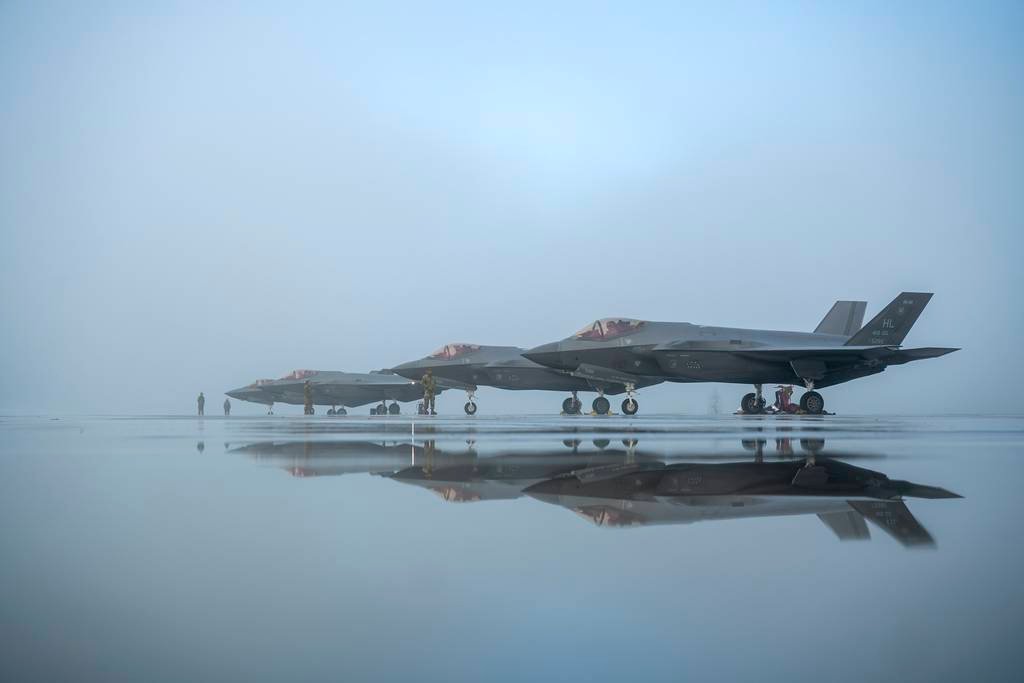CHRISTCHURCH, Lockheed Martin’s delay in launching the Technology Refresh 3 upgrade package for F-35 fighters has no immediate effect on buyers in the Asia-Pacific region, but governments are closely monitoring the timing of their procurement.
The US company has suspended F-35 deliveries pending acceptance of the TR-3 software package, which includes upgrades to the mission system’s avionics to improve the aircraft’s data storage, display processing and bandwidth capabilities. The package also forms the basis of the Block 4 upgrade, which is expected to be more comprehensive.
Defense News asked Lockheed if customers in Australia, Japan, Singapore or South Korea had expressed concern about the delay. A spokesperson replied: We remain in close contact with our customers to ensure they are informed of any delivery impacts. Other issues are best handled by the respective governments.
A spokesman for Australia’s Department of Defense said the problems with the TR-3, which caused an outcry in Washington, did not affect the country’s current F-35A fleet.
Defense officials in Japan and South Korea did not respond to requests from Defense News.
Due to the delay, the Royal Australian Air Force is experiencing the inconvenience of a late delivery of the remaining nine F-35As. This has an indirect effect on the final operational capability declaration, which requires the delivery of all 72 aircraft, an Australian defense spokesman said.
The government now expects to receive all the aircraft during the 2024-2025 period, indicating that the symbolic milestone of final operational capability could be extended into next year, beyond the initial target.
The RAAF continues to work closely with the US F-35 Joint Program Office to deliver the latest F-35A Lightning aircraft to the RAAF, a spokesman said.
A department official remained tight-lipped about how and when F-35As in service that contain older TR-2 and Block 3 software will receive the upgrades. Subject to government approval, the RAAF’s delivered F-35A aircraft will be upgraded to TR-3 standard as part of the F-35A modernization programme, the official said.
The TR-3 delay is not expected to affect South Korea, which has already received 40 F-35A fighters between 2018 and 2021. In December, Seoul purchased 20 additional F-35As in Block 4 configuration, which will begin arriving in 2027. years.
Also in 2027, South Korea’s maintenance, repair and overhaul depot at Cheongju Air Base will begin operations, meaning the country will not have to rely on Australia for deeper F-35 maintenance.
Singapore may also avoid the impact of the TR-3 issue, as the four F-35Bs the country ordered in 2020 are expected to be delivered in 2026. Last year, Singapore exercised an option for eight additional F-35Bs, due to arrive in 2028 And at the beginning of 2024, the government announced the purchase of eight F-35As, which is expected from 2030.
Japan is the only other country in the Asia-Pacific region with active orders for 105 F-35A and 42 F-35B fighters. Nearly 40 F-35As have been delivered to date, and Japan has its own facilities for final assembly and testing. The first six US F-35Bs configured with the TR-3 as they belong to Group 16 are expected to arrive early next year.
Although Lockheed Martin plans to deliver the first TR-3 aircraft capable of combat training during the third quarter, it remains to be seen whether the timing will be met.
According to a company spokesperson, the TR-3 is a top priority, and most of the package’s new features are currently undergoing flight testing.
Gordon Arthur is the Asia correspondent for Defense News. After 20 years working in Hong Kong, he now lives in New Zealand. He participated in military exercises and defense exhibitions in about 20 countries in the Asia-Pacific region.
